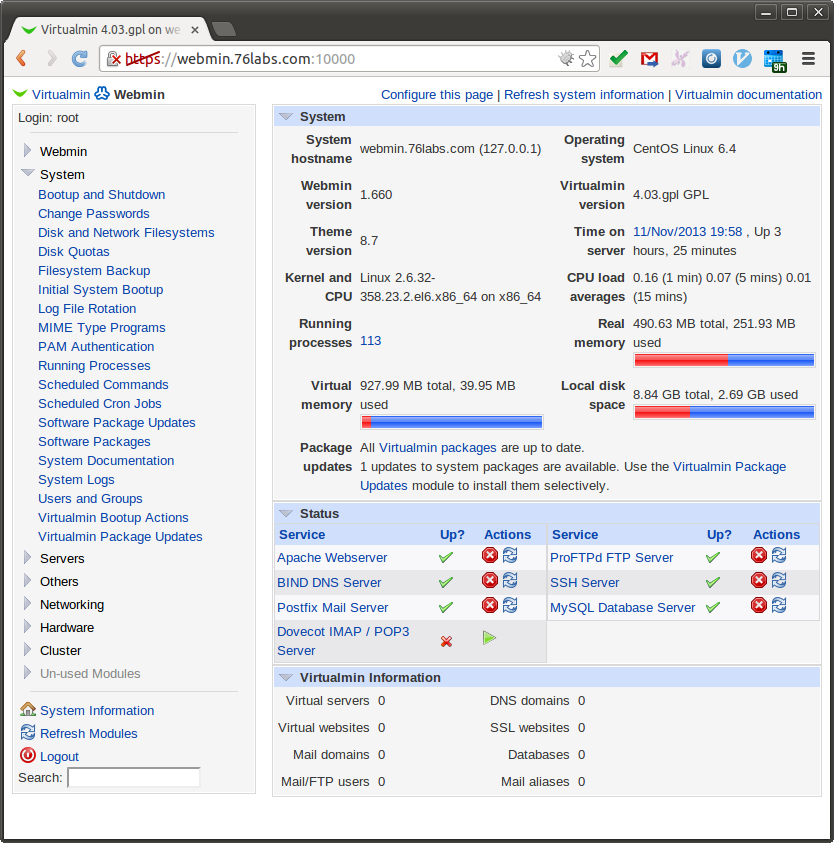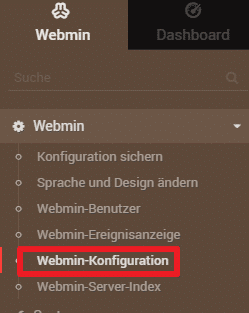
If Disable logging is selected then Webmin will write no logs at all.Click on the Logging icon on the main page.This actions log can even include the details of every file changed and command run by each action, so that you can see what Webmin is doing under the hood.īasic logging is enabled by default, but you can configure it further by following these steps: As well, it also creates a log of actions performed by users, such as the creation of a DNS zone or the deletion of a Unix group. Like most web servers, Webmin can be configured to create a log file in the standard CLF format the records every request it receives. Your browser will be re-directed to the new port and address, and you may need to login again. Hit the Save button to use the new settings.To change the port, enter a number into the Listen on port field.This must be the address of one of your host's real or virtual interfaces. To listen on only a specific interface address, select the second option in the Listen on IP address field and enter an IP into the text box next to it.Click on the Port and Address icon on the module's main page.To change the port or address, do the following :

Changing the listening IP address can also be useful if your system has multiple network interfaces and you want to only allow connections on the interface connected to the internal LAN.

For this reason you may want to use a port below 1024 (which only programs run as root can listen on) instead.

Because port 10000 can be used by servers run by any user, it may be possible for a malicious user on your system to wait for Webmin to be shut down and then start his own fake Webmin server on that part, which could capture the admin or root password. You may need to change the port though, perhaps because a firewall on your network only allows connections to web servers on the standard ports of 80 and 443. Webmin usually listens for connections on port 10000 on all of your system's IP addresses.
Webmin default port update#
This can be useful if the system you are running a browser on is frequently changing IP address, but is able to update a DNS record to match. To change this check the *Resolve hostnames on every reques*t box, and it will convert hostnames to IP addresses for comparison for every request.

Even though it is password-protected, you should limit access to only legitimate client systems if possible, so that an attacker from outside your network cannot even attempt to login. By default Webmin will accept connections from any IP address.


 0 kommentar(er)
0 kommentar(er)
